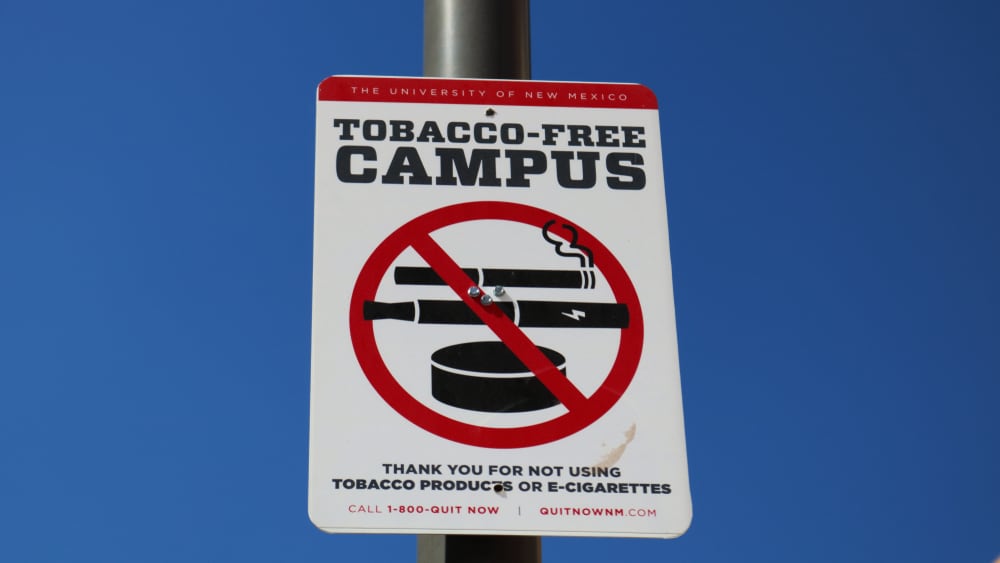At a glance
CDC's Office on Smoking and Health (OSH) is the lead federal agency for comprehensive tobacco prevention and control. OSH saves lives and money by preventing and reducing the use of commercial tobacco products—the leading cause of preventable disease, disability, and death in the United States.

What we do
Note: When CDC refers to tobacco on this web page, we are referring to the use of commercial tobacco products and not the sacred and traditional use of tobacco by some American Indian communities.
Commercial tobacco use accounts for about 1 in 5 deaths. Each year, nearly half a million U.S. adults, including those exposed to secondhand smoke, die early from smoking-related disease.
About 2 in 10 U.S. adults in 2021 currently used any tobacco product. About 1 in 10 U.S. middle and high school students in 2023 currently used any tobacco product.
Smoking harms nearly every organ of the body. Smoking causes cancer, heart disease, stroke, lung diseases, type 2 diabetes, and other chronic health conditions. Exposure to secondhand smoke affects 1 in 4 people in the United States who don't smoke. It causes serious health problems for children and adults.
Smoking-related illness cost the United States more than $600 billion in 2018. This cost includes more than $240 billion in health care spending and nearly $372 billion in lost productivity.
Some groups of people are more affected by tobacco use, secondhand smoke exposure, and tobacco-related health problems. They may also have less access to treatment to help them quit. Most people who use tobacco products want to quit.
OSH works to:
- Prevent adolescents and young adults from starting to use tobacco.
- Help people who use tobacco quit.
- Eliminate exposure to secondhand smoke.
- Advance health equity by eliminating inequities and disparities related to tobacco use.
Priorities
Measure tobacco use and translate data into effective action
CDC promotes evidence-based approaches to prevent and control tobacco use. To measure progress toward its goals, CDC collects, studies, and shares information on tobacco use and its effects on health. CDC uses this information to:
- Monitor changes and trends in the use of tobacco products among young people and adults.
- Understand tobacco-related knowledge, attitudes, and behaviors among young people and adults.
- Promote comprehensive tobacco control programs and policies.
- Answer important questions about tobacco use and tobacco control.
- Measure how tobacco use affects population groups to eliminate health disparities and advance health equity.
CDC shares information in high-quality reports, easy-to-understand web resources, and interactive data applications. The Tobacco Use Data Portal provides access to the latest tobacco prevention and control data, graphs, and maps. Users can download this information for more analysis. The STATE System provides data on state tobacco use prevention and control policies.
Support comprehensive tobacco control programs
In fiscal year 2023, CDC provided over $96 million to:
- 50 states and the District of Columbia
- 8 US territories and freely associated states
- 26 tribes or tribal organizations
- 9 national networks, and several other organizations
These funds supported their efforts to reduce tobacco-related diseases, disabilities, and deaths.
States that have made larger investments in comprehensive tobacco control programs have seen larger and faster declines in cigarette smoking among adults and young people. For every $1 spent on comprehensive tobacco control programs, states get a $55 return on investment, mostly in averted health care costs to treat smoking-related illness.
Help people understand the dangers of smoking
For every American who dies because of smoking, at least 30 are living with a serious smoking-related illness. Hard-hitting media campaigns raise awareness about the dangers of smoking and motivate people to quit.
CDC's Tips From Former Smokers® (Tips®) campaign encourages people who smoke to quit. Tips features real people from diverse backgrounds living with serious long-term health effects from smoking and secondhand smoke exposure. They share the impact smoking has had on their lives—and the lives of their loved ones.
Tips connects people who smoke with resources to help them quit, including 1-800-QUIT-NOW. This resource links callers to their state quitline, as well as web-based, text-based, and app-based cessation support resources.
Read more: Tips Impact and Results.
Help all people quit using tobacco products
CDC helps people quit using tobacco products by promoting free quitlines and other support services. CDC works with health insurers, health care providers, and employers to:
- Increase coverage of proven tobacco cessation treatments.
- Encourage tobacco-free workplace policies.
- Promote health system changes encourage counseling and medicines for patients who want to quit.
Help all people understand the risks of youth tobacco use
Youth tobacco product use is unsafe. Nearly all tobacco product use begins during youth and young adulthood. Nicotine is highly addictive and can harm brain development, which continues into the early to mid-20s.
Cigarette smoking is decreasing among young people; however, youth e-cigarette use is a critical public health concern. Many young people who try e-cigarettes remain e-cigarette users. In 2023, about half of students who had ever used e-cigarettes were still using them. Over 2.1 million US middle and high school students (7.7%) reported currently using e-cigarettes in 2023.
CDC also provides resources to help parents, educators, health care providers, and other youth influencers talk to young people about the dangers of tobacco products. CDC's activities include:
- Working with all 50 states and the District of Columbia to support state and community activities to prevent use of tobacco products, including e-cigarettes, among youth and young adults.
- Developing easy-to-understand materials using the best available science.
- Using digital and social media platforms to create and deliver information where young people and youth influencers seek information.
Our impact
- From 2012–2018, the Tips® campaign motivated more than 16 million U.S. adults to make a quit attempt. One million U.S. adults successfully quit smoking. Tips prevented an estimated 129,000 early deaths and helped save an estimated $7.3 billion in smoking-related health care costs.
- CDC, with the U.S. Food and Drug Administration, implements the National Youth Tobacco Survey to provide national data on youth tobacco product use. Federal, national, and state partners use these data to design, implement, and evaluate youth tobacco prevention and control programs.
Leadership Bio

Dr. Kittner leads the Office on Smoking and Health
